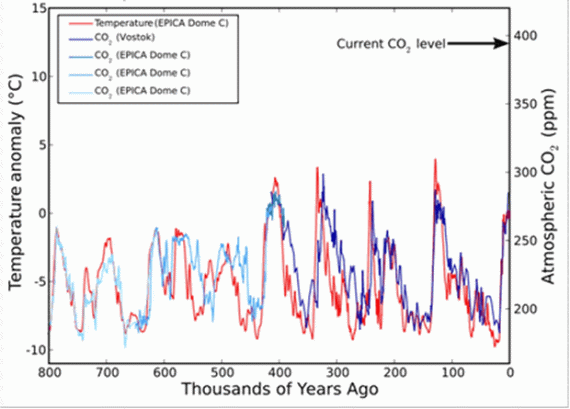Using technology and the Internet to learn, teach Navajo
Posted 21 July 2011, by Carmenlita Chief, Navajo Times, navajotimes.com

Krystal Seschillie
Sometimes, it takes a great book or documentary film to motivate an individual to create something meaningful for the benefit of their family, their people, or the world at large.
For Krystal Seschillie, 29, of Crownpoint, it simply took a single Navajo word and a sprinkle of frustration to spark a personal endeavor to help other Navajos learn their language utilizing available tools of technology and the Internet.
In 2005, Seschillie was close to completing her undergraduate studies at Brigham Young University, where she was studying public health and health science.
One day, one of Seschillie’s close friends informed her that her sister, Carmen, would be relocating to BYU from Mexico to study English as a second language at the school’s English Language Center.
With more time on her hands that year, Seschillie decided she could serve as Carmen’s English tutor. During one study session, a conversation ensued between the two about Seschillie being Navajo.
“We talked about the culture, and about clans,” she said.
The conversation eventually meandered onto the subject of simple English words, and how to say their equivalent in the Navajo language.
One particular word waited around the corner like a mischievous foot waiting to trip the unsuspecting ‘at’ééd.
“She asked me how to say ‘friend’ in Navajo,” Seschillie recalled.
The BYU graduate remembered combing through her mind in search of the word. When she finally opened her mouth to respond, she was bewildered when nothing emerged, and thought to herself in shock, “Oh my gosh! I don’t know how to say ‘friend’ in Navajo!”
As someone who was raised in a Navajo-speaking community and in a home where she sometimes heard her parents use simple Navajo words and phrases, Seschillie knew the word had to be rolling around somewhere in her brain.
“All I could remember was that it was two-syllable word,” she said. “It was scary!”
Afterward she thought, “I have to do something, or I lose what very little [Navajo] I know already.”
She eventually asked a Navajo friend, who said the word she was seeking is “shik’is.”
For Seschillie, who is Tl’ááshchíí (Red Bottom Clan), born for Kinyaa’áanii (Towering House Clan), this scary moment turned out to be pivotal.
Power of the Internet
Like many young Navajos, Seschillie fully embraces the Internet as a tool for learning and teaching. It can help those living far from the reservation maintain a connection to the Navajo culture, people, and language.
“We are in an amazing technological age where there are limitless possibilities for what we can share and learn online. The young Navajo population has access to the Internet. Why don’t we use this to our advantage?” she said.
And she that’s exactly what she set out to achieve.
In 2010, Seschillie created a blog – a place on the Internet where other Navajos, anywhere in the world, could visit if they, like her, needed a reliable source for free or inexpensive, up-to-date aids in honing their Navajo language skills.
Named “Navajo Now,” it emphasizes resources for vocabulary expansion, reading and listening comprehension, and verb and sentence structures. Navajo Now can be found at www.navajonow.wordpress.com.
Seschillie chose the name because it reminded her “I need to get on the ball right now, not later when it might be busier.”
Navajo Now
So what exactly is a blog?
The word is a contraction of the words “web” and “log.” It is similar to a journal where a person can write and post daily entries on a Web site with content of their choosing.
Seschillie designed the Navajo Now blog to be a repository of information and learning materials for those who seek to speak Navajo but can’t afford more expensive language learning resources.
Navajo Now is also a place for Seschillie to record her own Navajo learning progress. It is her goal to post and update the blog on a weekly basis.
If you visit Navajo Now, you can read about her experience testing out Navajo learning apps for her iPhone, and whether they are worth purchasing, and how she used her iPod to study Navajo vocabulary by uploading word flash cards onto the device.
“It is a fun way to do a progress report. It provides for accountability,” she said about documenting her learning in a public forum.
While Seschillie offers readers learning materials she has developed on her own, much of the content on Navajo Now is information she has uncovered through countless hours of Internet searching. She often accompanies mention of the resource with a written analysis and her own perspective on it.
Seschillie recently reposted YouTube videos of a few of last year’s Navajo Nation presidential candidates talking about their campaign platforms in Navajo.
She explained that they were simple, but helpful, resources for listening to spoken Navajo.
“Navajo is very auditory. I want to be listening more. Reading won’t do it alone,” she said.
Seschillie also discovered quite a few Navajo books online with expired copyrights, meaning they are free. One interesting title she found was “A Vocabulary of the Navaho Language,” published in 1912 by the Franciscan Fathers of Saint Michaels, Ariz.
Readers can follow a link from her blog site to download a copy for their own personal library.
When Seschillie first began searching online for free Navajo language learning resources two year ago, she found there was not much available. The resources that did seem promising often required a purchase.
She says this is the other reason for starting Navajo Now.
“There are materials to learn Navajo at a price. I don’t have a lot of expendable income so where does that leave me and others in that same situation who want to learn the language?” she said.
One such resource is the Navajo Rosetta Stone software.
The software, which can be also purchased on DVD for $200 at places like the Navajo Nation Museum, Ellis Tanner Trading Company, and Salina Bookshelf in Flagstaff, was a bit steep for Seschillie’s wallet.
“If an individual wants to learn Navajo, has a computer, and the money to purchase a copy of the software … they can. My concern is that the software won’t reach its intended audience because of the price tag,” Seschillie said.
“I am sure [the manufacturers] would like to provide the software at a cheaper price, but funds need to be acquired for future installments of the software,” she reasoned.
Other problems Seschillie encountered frequently on her initial searches were broken links and unmaintained Web sites. “There were dead Web links, one after another,” she said. “Some had not been updated in years. It was kind of frustrating.”
Asked whether she has seen an increase in the number of resources available online within the past two years, she replied, “Not really.”
With help from other Navajo language contributors, perhaps this will change.
Looking forward
Seschillie hopes her blog will also inspire others to create their own projects locally, and contribute to the online community of Navajo language learners.
“Start blogging in Navajo. Keep video logs in Navajo. I think [Navajo] is difficult because we don’t have enough resources. If we had more resources available to us, then it wouldn’t be,” she said.
Seschillie has several Navajo language learning projects in line for the future, including the launch of an audio podcast on her blog.
She encourages people who can donate their time or their Navajo language skills to contact her if they would be willing to assist her with future projects, which she will publicize on Navajo Now.
Above all, Seschillie urges everyone with access to fluent Navajo speakers in their family or community to take advantage of those opportunities to practice using the language.
“As long as you have them around, use them,” she implores.
Seschillie can be contacted by email at navajonowblog@gmail.com.
Information: www.navajonow.wordpress.com.
http://www.navajotimes.com/entertainment/culture/2011/0711/072111blog.php









 Firefighters put out six wildfires in Russia’s Far East
Firefighters put out six wildfires in Russia’s Far East